Introduction
Udder edema is the accumulation of fluid in the udder and sometimes also in the cow’s belly. Some edema is normal around calving time. But, excessive edema will make milking more difficult and can do permanent damage by breaking down udder supports. Incomplete removal of milk at milking time may result in lower milk yield for the lactation. Udder edema results from increased blood flow to the udder accompanied by decreased blood flow from the udder. Increased permeability of the blood vessels allows fluids to leak out and accumulate.
University of Tennessee researchers suggest that “oxidative stress” may be a cause of udder edema. Even though oxygen is essential for life, the cow needs to metabolize it and get rid of it otherwise it can be toxic. When metabolism increases, such as for milk production, more free oxygen may end up in the udder. Oxygen reacts with mycotoxins in the feed, products from heat-damaged feed, and excessive iron and molybdenum. These are all called pro-oxidants. Products from these chemical reactions damage cell membranes, causing udder edema.
Udder edema begins shortly before calving when blood flow increases to the udder in preparation for lactation. It is normal for most cows to experience some degree of udder edema before calving. Under normal conditions, the edema will clear from the udder within a week or two post calving. Physiologically, a developing calf can restrict the flow of blood and lymph away from the udder while at the same time metabolic changes, especially hormonal fluctuations, cause an increased blood supply to the area. This combination can lead to the excessive pooling of fluid (Merck’s Veterinary Manual). The clinical manifestation recorded in the present study agrees with those reported by Sharma et al. (2005). Dentine and McDaniel (1983) also observed that udder edema is more severe in heifers than cows.
Case History and Clinical Observation
A seven year old and 8.5 month pregnant jersey crossbreed cow presented to us with the history of swelling on udder since 5 days according to the owner swelling develops slowly within five days, feed intake of animal was also decreased and in previous calving also she faced the same problem. The Clinical examination reveals that Udder swelling with fluidic thrill and pain on palpation (Fig.1), Body Temperature 104.50 F, Slightly Congested mucus membrane, Tachycardia. Based on history and clinico-physiological examination case was diagnosed as udder edema
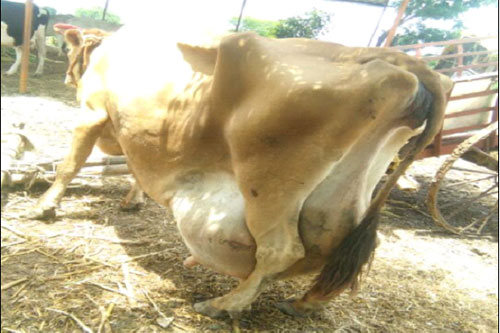
Treatment and Discussion
The animal was treated with Inj. Meloxicam @ 0.5mg/kg BW IM for 5 days, Inj. Furosemide @0.5mg/kg BW IM first 3 days, Inj. Chlorpheniramine maleate @0.5mg/kg BW IM for 5 days and Hot Fomentation is advised this therapy was continue for 5 days, animal responded very well to the therapy, on second day swelling reduce up to 20 % and animal start eating normally (Fig. 2) on 4th day about 70% swelling is reduce and there is no pain on palpation (Fig. 3). The case was Un eventful recovered on Sixth day of treatment (Fig. 4). The treatment with diuretics, antihistaminic and anti-inflammatory were help in draining out excessive accumulation of interstitial fluid, reducing histamine release and reducing swelling of udder and relieving pain respectively. Treatment includes massages and hot compresses on the affected areas stimulates blood flow, which aids in the removal of the excess fluid.
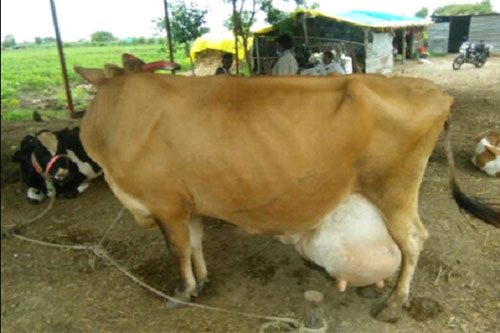
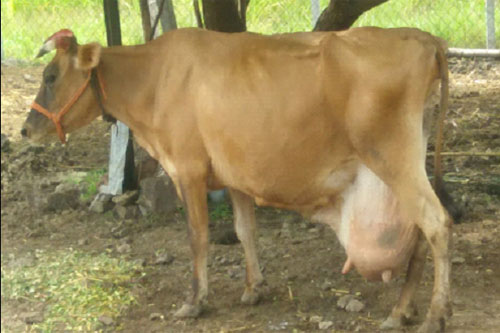
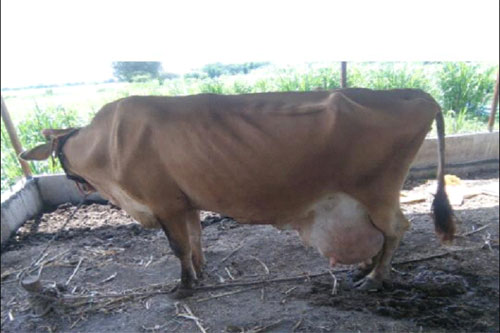
Several procedures may prove helpful in the treatment of udder edema. This includes massaging the udder in an upward direction for 10-20 minutes twice a day after milking so as to promote circulation of fluids, udder supports for cows with poorly attached udders, and moderate exercise which helps stimulate lymph circulation. Drugs such as diuretics can be used to speed up the removal of water from the body. Corticosteroids is another drug that can be utilized, but only with extreme caution and under the direction of a veterinarian, due to the potency and other resulting complications like in Pregnant cows abortion. In addition, prevent chilling and bruising of udders and milk out problem-cows before calving. Anionic salts in the prepartum diet will also help to prevent udder edema in a way because of the diuretic effect of the anionic salts.
Factors like prepartum heavy grain feeding to heifers (Dentine and McDaniel, 1983) and high sodium and potassium intake in housed cattle might be predisposing factors for the udder edema. Malven et al. (1983) concluded that prepartum edema was positive for plasma estrone and estradiole-17a and was negative for estradiole 17b and progesterone. Udder edema is frequently seen in primiparous cows. This could be due to the immaturity in the vascular structure of the udder being more vulnerable to fl uid retention. Heredity also may play a part increasing the susceptibility of the cow to udder edema (Merck’s Veterinary Manual).
References
- N. Ghodasara, H.H. Savsani and P.H. Vataliya THERAPEUTIC MANAGEMENT OF PERIPARTURIENT UDDER EDEMA IN JAFFRABADI BUFFALOES AND GIR COWS
- Merck’s Veterinary Manual. The Merck Veterinary Manual. Available from http://www. merckvetmanual.com/mvm/index.jsp.
- Sharma, N., S.K. Maiti, K. Mukherjee, R.C. Ghosh and S. Roy. 2005. Post parturient udder edema and its treatment in a Sahiwal cow. Indian Vet. J., 82: 675-676.
- Dentine, M.R. and B.T. McDaniel. 1983. Variation of edema scores from herd-year, age, calving month and sire. J. Dairy Sci., 66: 2391-2399.
- Erb, H.N. and Y.T. Grohn. 1988. Epidemiology of metabolic disorders in periparturient dairy cow. J. Dairy Sci., 71: 2557-2571.
- Malven, P., R.E. Erb, M. Frances, T.S. Stewart and B.P. Chew. 1983. Factors associated with edema of mammary gland in primigravid dairy heifers. J. Dairy Sci., 66: 146-152
- Mosa’b Al-Balas, RPh, Pina Bozzo, and Adrienne Einarson, RN Use of diuretics during pregnancy
- J G Vestweber, F K Al-Ani, D E Johnson Udder edema in cattle: effect of furosemide, hydrochlorothiazide, acetazolamide, or 50% dextrose on venous blood pressure
- Rajesh Kumar Singh. Udder edema Treatment in Dairy Cattle
|
The content of the articles are accurate and true to the best of the author’s knowledge. It is not meant to substitute for diagnosis, prognosis, treatment, prescription, or formal and individualized advice from a veterinary medical professional. Animals exhibiting signs and symptoms of distress should be seen by a veterinarian immediately. |



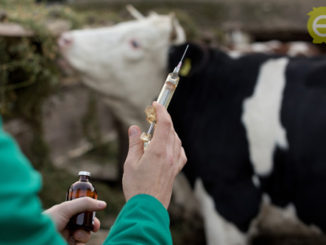
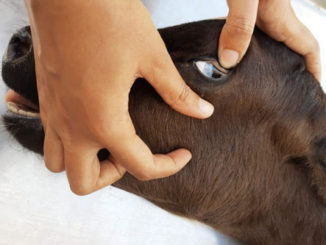

It’s very useful information. Good!
Good work Dr😊 keep it up
Very nice!
Very informative knowledge Dr.
Very nice 👍
Nice info! It becomes quite easy to understand,very well explained.your work is much appreciated.